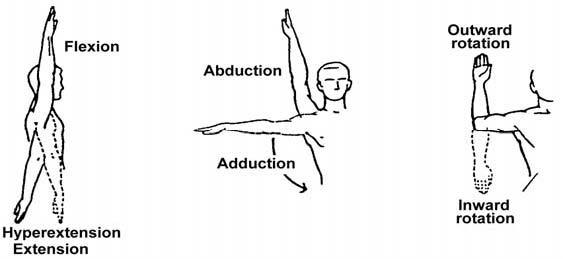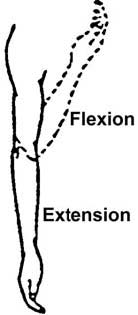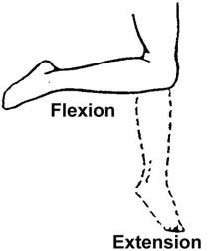 This is the Archived Desktop Edition.
This is the Archived Desktop Edition.
You should be transferred to the Newest Edition for Desktop and Mobile within 2 seconds.
Basic Patient Care Procedures
Exercises: Lesson 2
EXERCISES, LESSON 2
INSTRUCTIONS: Answer the following exercises by marking the lettered response that best answers the question or best completes the statement.
After you have completed all of the exercise, turn to "Solutions to Exercises" at the end of the lesson and check your answers.
1. Posture is:
a. Standing.
b. Body alignment.
c. Walking.
d. Sitting erect.
2. In the standing position, the back should be straight; feet firmly on the ground,
about ______________ inches apart.
a. 4 to 6.
b. 6 to 8.
c. 8 to 10.
d. 10 to 12.
3. Posture in the sitting position, the back should be straight, with the weight resting
equally on the thigh and the:
a. Buttocks.
b. Spine.
c. Knees.
d. Legs.
4. Which of the following is not a principle that applies to lifting an object?
a. Push, pull, slide, or roll a heavy object on a surface to avoid unnecessary
lifting.
b. Kneel on both knees, or squat, and keep the back straight when working at the
floor level.
c. Obtain help before attempting to move an obviously unmanageable weight.
d. Work in unison with an assistant. Give instructions and agree on the signal to
start the activity.
5. The bed rest position where the patient is flat on the abdomen, legs extended, feet
over the edge of the mattress, and toes pointed to the floor is the:
a. Fowler position.
b. Lateral position.
c. Supine position.
d. Prone position.
6. The patient lying flat on his back is in the:
a. Prone position.
b. Supine position.
c. Lateral position.
d. Fowler's position.
7. A person lying on either side is in the _________________ position.
a. Fowler's.
b. Lateral recumbent.
c. Supine.
d. Prone.
8. The ________________ position will remain comfortable and safe indefinitely.
a. Sitting.
b. Fowler's.
c. Lateral.
d. None of the above.
9. Which one is correct to achieve good body alignment in bed?
a. Head should be in midline with the trunk.
b. Back should be straight, with normal body curves maintained.
c. Ribs elevated to prevent constriction of chest.
d. All of the above.
10. Body mechanics enable medical personnel to perform moving and lifting:
a. While avoiding back strain.
b. In order to pick up more weight.
c. To prevent dropping supplies.
d. While standing far away from an object.
11. Mechanics of body movements suggest that to move a patient toward you, let the
arms holding the patient slide on the surface toward you while:
a. Shifting your weight forward from rear to front foot.
b. Shifting you weight backward from front to rear foot.
c. Shifting your weight equally on each foot.
d. None of the above.
12. To move a patient away from you, let the arm holding the patient slide on the
surface away from you while:
a. You shift your weight forward from rear to front foot.
b. You shift your weight equally on each foot.
c. You shift your weight backward from front to rear foot.
d. None of the above.
13. Which one of the following is not one of the principles that apply to moving or lifting
activity?
a. Face the direction of movement.
b. Use large muscle groups of legs, arms, and shoulder.
c. Push, pull, slide, or roll a heavy object.
d. Allow the patient to roll to your side as this will reduce back strain.
14. When moving the mattress up, you should:
a. Stand in front of the bed and grasp the mattress.
b. Stand behind the head of the bed and grasp the mattress.
c. Brace your hip against the bed while pulling.
d. Stand on either side of the bed and pull the mattress up.
15. To turn a patient on his side, when you are working alone, always:
a. Turn the patient toward you.
b. Turn the patient away from you.
c. Turn the patient toward the center of the bed.
d. Turn the patient toward the outer edge of the bed.
16. Before starting to lift the patient, you should first:
a. Move the patient away from you.
b. Shift your weight forward.
c. Explain the procedure to him.
d. Move the patient toward you.
17. The figure to the right shows range-of-motion for the:

a. Neck.
b. Shoulder.
c. Elbow.
d. Forearm.
18. The figure to the right shows range-of-motion for the:

a. Shoulder
b. Elbow.
c. Forearm.
d. Wrist.
19. The figure to the right shows range-of-motion of the:

a. Hip.
b. Knee.
c. Ankle.
d. Foot.
20. The figure to the right shows range-of-motion of the:

a. Hip.
b. Knee.
c. Foot.
d. Toes.
Check Your Answers on Next Page
